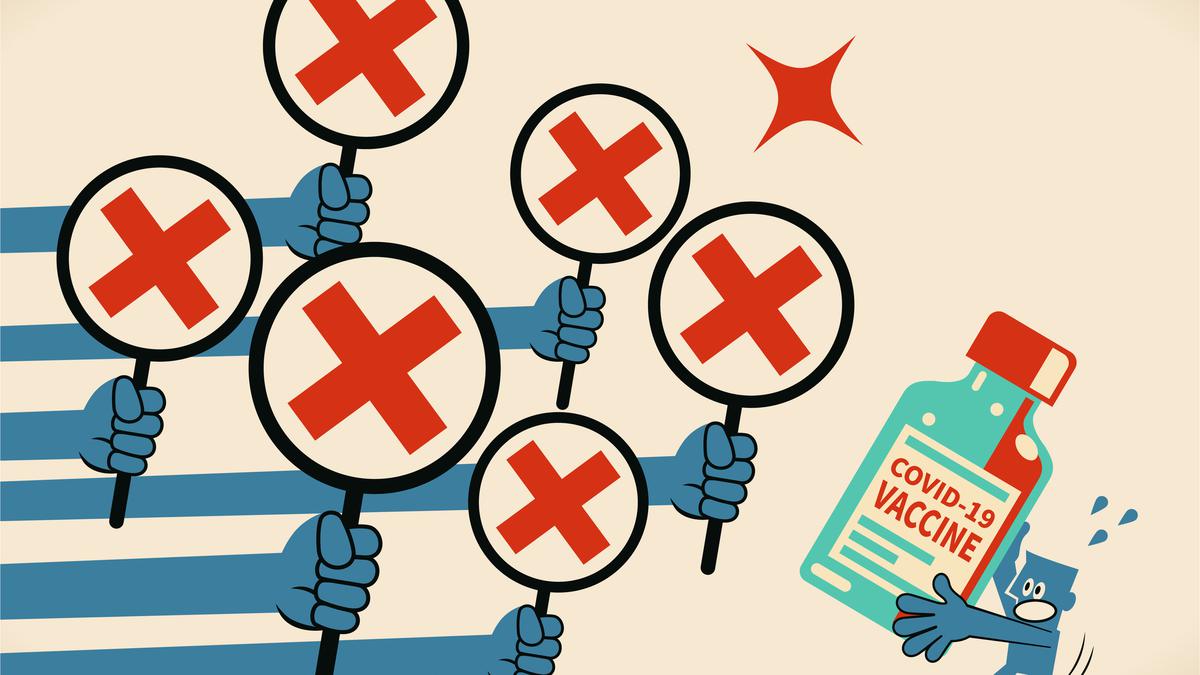
A look into the history and expansion of the anti-vaccine movement in the U.S. Premium
The Hindu
analysing the anti-vaccine movement in the U.S.
Richard M. Carpiano, Timothy Callaghan et al, ‘Confronting the evolution and expansion of anti-vaccine activism in the USA in the COVID-19 era’, The Lancet, Volume 401, Issue 10380, March 18, 2023
doi.org/10.1016/S0140-6736(23)00136-8
Vaccine hesitancy is probably as old as vaccines itself. People have, through the years, distrusted vaccines, for various reasons, even as the results in terms of health outcomes were obvious. In recent years, with high decibel social media amplification, the movement has grown stronger than the few stragglers here and there of the past. Post pandemic, the anti-vax campaign has been reflected in the poor levels of uptake of COVID vaccinations, even when they were available free of cost, as in India. The authors look at the entire history of the vaccination movement in the U.S., paring it down to the specifics of post pandemic hesitancy and disbelief. However, the resonance of the movement is in every nation in the world that is struggling to up the ante and increase vaccination coverage.
Vaccines are the tools by which nations can achieve protection from mortality and morbidity from serious, life threatening infections for their people. The invention of the small pox vaccine in 1796 began the era of vaccinations and over the years, the technologies and processes involved in developing vaccines have grown smarter and advanced, allowing for a fast tracking previously unthinkable in medicine. Parallelly, vaccine hesitancy also grew seeing a milestone when Wakefield’s article in The Lancet, which was later withdrawn, drew a link between autism and the vaccine against rubella, mumps and measles.
While acknowledging the leap in geometric progression post pandemic, the authors trace that in the years preceding the COVID-19 pandemic, anti-vaccine activism became more visible in the U.S., mainly through three distinct developments.
Before the pandemic, anti-vaccine activism was increasingly aligned with conservative political identity. Secondly, the paper notes, anti vaxxers organised themselves into proper groups and networks that lobbied state legislatures and promoted conservative political candidates with anti-vaccine positions. The leveraging of social media, including using common naming conventions, branding and cross promotions, to spread their ideas started even before the pandemic. Harassment and threats to health-care and public health professionals began on social media, in the form of orchestrated attacks and troll bots.
The authors pointed out that the COVID-19 pandemic exacerbated the evolution of the lobby and magnified the reach of vaccine misinformation. “Anti-vaccine activists, who for many years spoke primarily to niche communities hesitant about childhood vaccinations, have used traditional and social media to amplify vaccine-related mistruths about COVID-19 vaccines while also targeting historically marginalised racial and ethnic communities.”





















 Run 3 Space | Play Space Running Game
Run 3 Space | Play Space Running Game Traffic Jam 3D | Online Racing Game
Traffic Jam 3D | Online Racing Game Duck Hunt | Play Old Classic Game
Duck Hunt | Play Old Classic Game











